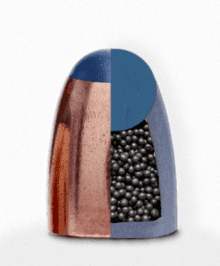eagleseven
Quod Erat Demonstrandum
Because we are looking at one-shot-stop percentages.Why would the stats for the hollow points for a 9 mm and a .45 be the same?
Both a 4000-pound bomb and a 8000-pound bomb have 100% one-shot-stop percentages...they will both kill you with a direct hit. Still, the 8000-pound bomb is more destructive.

 stopping power is quite realistic, i'd say. used properly, that is multiple deployments of rounds to the abdomen, the relative stopping power of a .22 and .45 pistol is measurable and very real. such power can make a life or death difference for the person trying to defend himself. it will stop an approach; it will stop or mitigate the opponent's use of a gun or knife.
stopping power is quite realistic, i'd say. used properly, that is multiple deployments of rounds to the abdomen, the relative stopping power of a .22 and .45 pistol is measurable and very real. such power can make a life or death difference for the person trying to defend himself. it will stop an approach; it will stop or mitigate the opponent's use of a gun or knife.